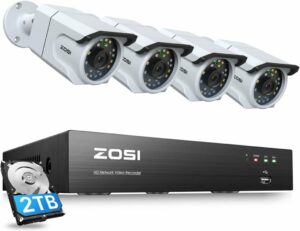Meteorite hunting is something we have been interested in since early childhood on our farms in southeast Arkansas. Being in an area with dark skies exposed us to the wonders of the night sky anytime there was a clear night. In the summer the Milky Way was visible from horizon to horizon. You could see it in a way few city dwellers ever get to see it. You could watch the planets as they moved across the sky. And, of course, there were plenty of opportunities to observe “shooting stars” as they streaked across the heavens.
What Are Meteors?
Meteors are what most people term as shooting stars. They are bits of dust and rock which enter the Earth’s atmosphere at blazing speeds. The speed of these bits of space debris can range anywhere from 25,000 mph to over 160,000 mph. When they encounter the Earth’s atmosphere they produce incredible heat due to friction with the air molecules. The smaller bits burn up in the atmosphere and produce light which we see as a shooting star. These can produce different colors and can even leave a trail that can be visible for several seconds or more after the meteor burns up. This depends mostly on what elements are contained within the body entering the atmosphere.
Larger meteors can actually have enough of the original body left to reach the ground. If a meteor makes it all the way to the ground they are then termed meteorites. While most people are content to get their thrills from watching the big meteor showers which we all know, such as the Leonids in November and the Geminids in December, there are a growing number of citizen scientists and even ordinary people who are helping the scientific community by looking for these pieces of meteors that reach the ground. It can even be quite lucrative as these rocks can be quite valuable. But before we talk about that let’s dig a little more into meteorites.
What Are Meteorites?
Meteorites are larger pieces of space rocks that survive all the way through the atmosphere to the ground. There are mainly 3 types of meteorites that are subdivided by scientists according to the materials they contain.
Stony Meteorites– Stony meteorites are composed mainly of silicates with some iron or nickel grains throughout. These are the most common types of meteorites recovered. Around 95% of meteorites recovered are stony meteorites.
Stony-Iron Meteorites– These meteorites are far less common at only 2% of all meteorites recovered. They contain a roughly equal amount of silicates and iron within them.
Iron Meteorites– Iron meteorites are very dense and are really composed of iron and nickel. These meteorites are extremely dense. Although they are rare as well, they are among the easiest to find thanks to the metals they contain and their density. These meteorites can be searched for with a metal detector due to their composition. They also withstand weathering better than stony meteorites. They don’t really resemble the rocks we see on Earth, so they can also stand out when you are looking for them.
How Do You Find Meteorites?
Meteorite hunting would be almost impossible if the only way you could find them was to just stumble across them. However, it is possible to find a meteorite in this way.
I remember the first meteorite I ever found was found in just this way. I was headed out early in the morning to do some fishing when I spotted something out in a freshly floated soybean field. If you grew up on a farm you know that when a farmer floats a field just before planting the ground is cleared and very level. It is the last step in preparing the field for planting. As I was walking along I caught sight of a small indention in the field with a black rock in the center. The rock was lying inside a small “crater” and it was still cold even though the outside temperature as the sun was rising was close to 80 °F. I knew I had found my first meteorite totally by chance.
Today we have much more sophisticated ways to track down meteorites. The proliferation of security cameras has been a godsend to meteorite hunting. These cameras keep a 24-hour watch which can be very helpful in the search for meteorites. They can capture fireballs as they enter the atmosphere and indicate their direction when you know which way the camera is pointing. When you can find several of these cameras with footage from different locations it can help to triangulate where the meteor entered the atmosphere and the direction of travel. If the camera also has a microphone it can record the sonic boom from the fireball. By analyzing the time it takes from the visual appearance of the fireball to the arrival of the sonic boom the distance to the fireball can then be established. Radar and satellite data can also be used to help pinpoint the likely location of where meteorites may be located. All this data can be calculated and narrowed down into what meteorite hunters call a strewn field. This is overlaid on a map and indicates the best guess of where meteorites are most likely to have fallen.
Once all this data has been gathered and a likely location has been identified it is still good old-fashioned boots on the ground that have to go out and scour the area to see if any material from the fireball made it to the ground.
The Process Of Meteorite Hunting
The process of meteorite hunting starts with the observation of a fireball that may have dropped meteorites. As a larger meteor enters the atmosphere it gets heated by friction and starts to glow white-hot. This makes it visible to observers and cameras on the ground. Many observers report their sightings to sites like AMS (The American Meteor Society). The first step is usually to go to this site and see if there are any events that look promising. AMS uses sighting reports to deduce a projected path for the fireball from all the reports from observers. This is where camera owners can help greatly. Eyewitness reports can be off on both the time and direction of a witnessed fireball. However, when a video is uploaded and the camera has a known direction it is pointing and a known field of view it is a much more accurate indicator of direction. The timestamp from the camera is also more accurate than most observational reports.
This is why it is so important to have more cameras viewing the sky. Steve Arnold, (host of Discovery Channel’s “Meteorite Men” TV series), has begun a Fireball Recovery Network. Steve has been working to promote the use of cameras by private individuals to help narrow down the search for meteorites. You can join the Fireball Recovery Network and keep up with the latest news and searches on his Facebook page.
He is looking to build up a network of individuals, schools, and organizations who are willing to mount all-sky cameras, or even single cameras, and report any sightings to the network. Even a single camera can yield useful data, and people are encouraged to mount them where they can. For instance, you might have a spot on your property, home, or barn where there are no obstacles, and you can see the sky in only one direction. If you mount a camera there you may be able to see a fireball and help out with the triangulation. Even though an all-sky cam that can see in all directions is ideal, even a single camera can help. The more cameras we have in more locations, the better we can pinpoint where a fireball may have dropped rocks.
Below is a short video we shot with Steve that tells you all about meteorites, why they are important to science, and how much they may be worth.
Below are a few examples of what you can do with a single camera. These are from one camera we have pointing north into Missouri over Bull Shoals Lake.
One of these fireballs was over 200 miles away. That is how bright these things can be. So you can see that with enough people willing to help by putting up cameras it will be easier to narrow down where these meteorites might be found. But the thing that might just tip the scales for you if you are still wondering how it can help you is that rocks from space can be really valuable. Even common stony meteorites are rare enough to be worth something when you sell them. But certain rare meteorites like those from the moon, Mars, or specific asteroids can be more valuable by weight than gold. Even common meteorites sell for $2-3 per gram. Rare meteorites can fetch $30-50 per gram. One ounce=28 grams, so you can see how this high value can quickly make it worthwhile to find one of these rare space rocks. If a rock falls on your property or your camera leads to a find, you could be entitled to share in the find and make back your investment in a camera system rather quickly.
This is an excellent sky camera kit. Click the photo for more info.
Cameras For Meteorite Hunting
You don’t need to invest a significant amount of money to help in the meteorite hunting quest. For a little over $200, you can get a camera system that will do what you need. Then you simply need to mount it and check the fireball reports on AMS. The camera records video to an external 1-TB HD, so you can download the clip from the cameras and upload the video to help in the search.
This is not by any means an all-inclusive primer on meteors, meteorites, and meteorite hunting. But hopefully, it has piqued your interest enough to want to learn more about these ancient rocks, which date to the early days of our solar system billions of years ago. If you do want to help be sure and join the Meteorite Recovery Team and mount a camera or all-sky camera system. You might even want to volunteer in a search if there is a fall close to you. We need eyes on the ground as well as eyes on the sky. Who knows, you just might find a valuable piece of an asteroid or planet, and help scientists unravel the mysteries of the early solar system at the same time.

